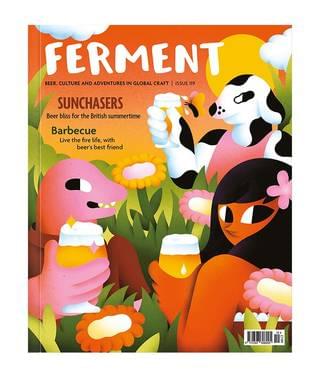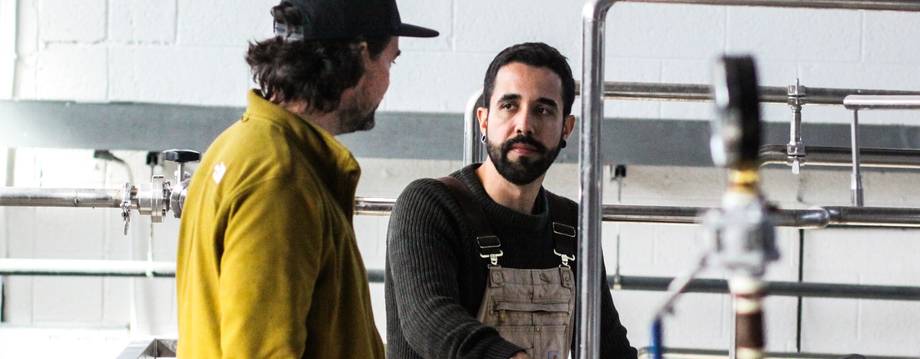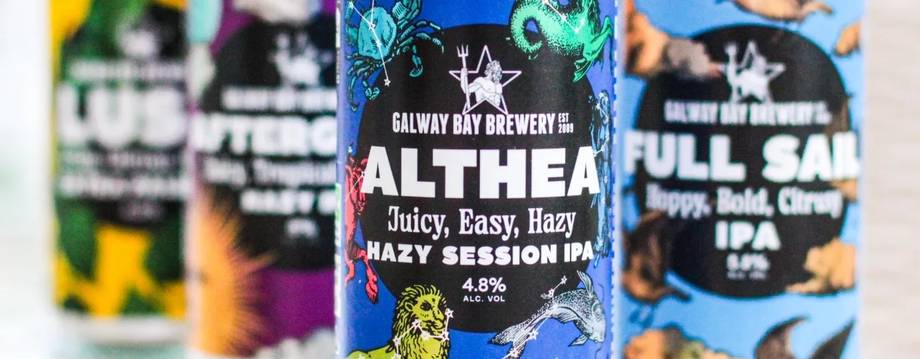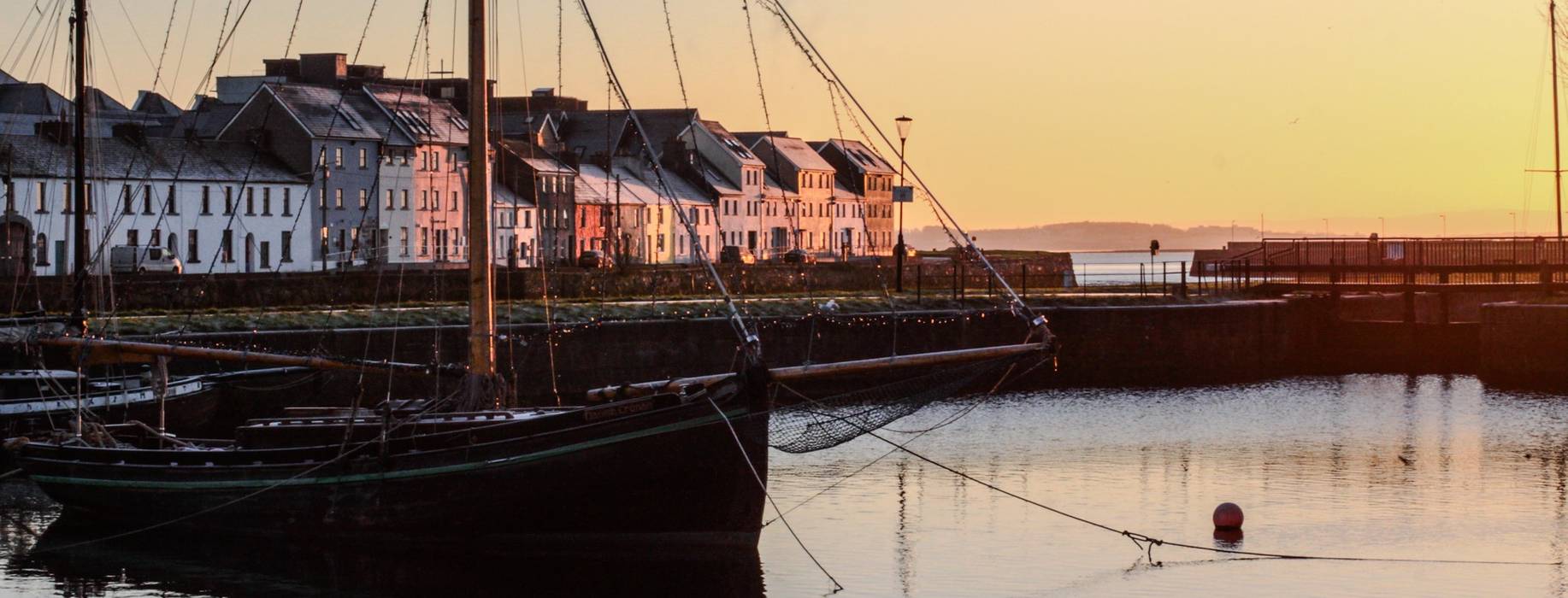All hands on deck
We speak to stalwart of Irish craft, Galway Bay, about beer, brewing, and the guiding principals that have steered the brewery through almost fifteen years of operation
Robyn Gilmour
Photos:
Galway Bay
Saturday 28 June 2025

This article is from
Sunchasers
issue 119
Share this article
Craft beer was almost non-existent when I was growing up in Ireland — as hard as it might be to believe, Guinness and Heineken had an even tighter chokehold on the market then than they do now — though there was one ubiquitous outlier. From 2011, Galway Bay’s neon brewery signs began pointing out purveyors of craft around the country, but more noticeable to me was that this brewery had its own pub, a real rarity in Dublin at the time. While working in restaurants on Camden Street, I’d spend my split shifts drinking radlers in Against The Grain, a bar to which I owe much of my early interest in artisanal beer.
However, it wasn’t until speaking with Galway Bay’s European sales and accounts coordinator Cormac Wall, that I learned the story behind this trailblazer of Irish craft beer. Founders Jason O'Connell and Niall Walsh hadn’t planned on opening a brewery, and actually started their lives as business partners with a pizza restaurant. The pair had spent some time in the US and seen how well craft beer paired with pizza there, and so when it came to opening a venue of their own, they began importing American beer to sell alongside their fare.
“We didn’t have anything like that in Galway, never mind the rest of Ireland,” says Cormac. “The way Jason tells it is that the beers became more popular than the pizzas. You know, the food was good but all the feedback was about the beer. They were really standing out, and Niall and Jason started to wonder if there was something in that.” Over time, Niall and Jason’s pizza restaurant became the bar and microbrewery still known and loved as the Oslo, in Salthill, Galway.

At first the brewery traded in artisanal interpretations of quite traditional beer styles — a blonde, a red ale and a lager for the most part — in order to connect with as broad a church of drinkers as possible. It wasn’t until its second head brewer, Chris Treanor, took the reins that Galway Bay began to experiment and innovate with styles most typically associated with modern craft. “Chris had been an assistant brewer before our then head brewer moved on, and he decided he was going to go for the job, in part because he really wanted to try brewing a double IPA in the style of those Californian eight-percenters.
“Back in those days, there were no 8% or 9% DIPAs on the Irish market. In 2013, people just hadn’t really heard of them. Chris got permission to brew one, even though it seemed kind of ridiculous, and needlessly expensive, but everyone was just blown away. Compliments just started rolling in from the different American brewers, and UK importers were fighting to get their hands on it. That was our Of Foam and Fury, which we still brew today, and the response to it just gave us the confidence to keep innovating. Next we released an imperial stout, Two Hundred Fathoms, which to this day is the highest-rated beer in Ireland.”
These beers embedded West Coast influence in Galway Bay’s identity, and undoubtedly changed people’s perspective of beer, but international acclaim wasn’t enough to revolutionise the Irish beer market. “People are always surprised that craft beer isn't bigger in Dublin, but it's just the big commercial brewers are very, very good at what they do in Ireland,” says Cormac. “You lose the taps very quickly when Lagunitas or Beavertown can give pubs five kegs for free if they agree to sell X amount of their beer. It’s probably the story everywhere, to be honest.”

It has always seemed to me that multinational dominance over the domestic beer market is more acute in Ireland than other countries, but Cormac has far-reaching perspective and experience informing his view of the scene.
“It can be difficult to experiment in a small market with limited shelf space, so I think Irish breweries really have to think internationally, and consider how their beers compete on a European level,” he says. “We can't go into too many niches that just focus on one market. We've got to have appeal. Our red ale is really popular in markets like Italy and France that enjoy more traditional styles. A lot of the dark beer we make goes to Spain and southern countries, and our Imperial stouts get lapped up in the Netherlands and Scandinavia. The UK likes session ABVs right now, so Althea is our biggest seller there.”
Navigating this tumult of export markets while trying to break new ground at home is no mean feat, but Cormac says that holding tight to some key pillars of the brewery’s identity has allowed Galway Bay to innovate cohesively over the years. “You've got to find something to be a guiding light for your business,” says Cormac. “There are so many breweries out there that how you stand out is important. For us, our heritage is the West Coast IPAs, Imperial stouts, and traditional Irish beers brewed to modern standards; those are the styles that guide us, and which we draw and reflect on when collaborating with other breweries, or creating new recipes.”
Post-COVID, Cormac says that Galway Bay refocused its approach to innovation, using its nine bars as key touch points for gathering feedback on new recipes from customers. “Drinkability is a cornerstone of our beers, and it's important we put that to the test,” says Cormac. “Althea is a great example of a beer that stands up to that, being consistent and flavourful, but also really sessionable. Beer should delight but also not distract or overwhelm a good evening of chat and music with friends.”
Share this article

